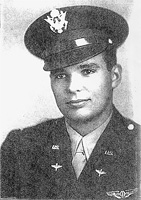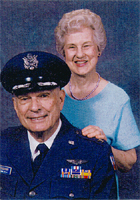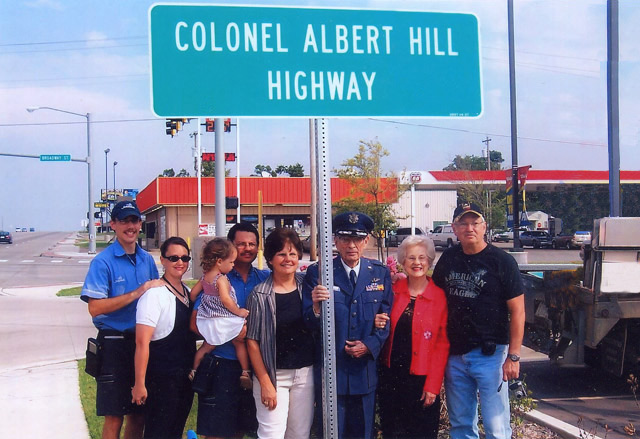|
|
Guest Book | Pages & Links |

|
Mission Diary (pages 1-29) | Combat Mission List Mission Folders (missions 1-33)
|

|
World War II Diary of Major Albert E. Hill Covering Seventy Nine
Combat Missions against German Military Targets in First Mission - 30 July 1943; Last Mission - 14 September 1944 Albert E. Hill Promotions Decorations Prologue In July of 1941 the British Cabinet Office ordered Mr. David Butt to make an in-depth study of the effectiveness of recent R.A.F. night bombing raids against German targets. Mr. Butt discovered that only 1 in 3 attacking aircraft dropped it's bombs within 5 miles of it's aiming point. The score dropped to 1 in 10 against heavily defended targets.* Such poor results must have brought smiles to the faces of Hitler and Hermann Gooring. Two new developments caused those smiles to disappear. First, the R.A.F. switched to area bombing in March of 1942. Accuracy was not required. The effect of area bombing on such targets as Hamburg, Essen, Cologne and Bremen was devastating. The second development was daylight, precision bombing over Europe by Air Forces of the United States, flying in tight formations and using the Norden bombsight. High-level B-17s hit the Rouen marshalling yard in the late summer of 1942 to open the 8th Air-.Force campaign: B-26s began bombing enemy targets from medium altitude (11,000 ft) in the early summer of 1943. B-26 and A-20 groups started out as part of the 8th Air Force but soon became part of the new 9th Air Force. The 9th contained eight groups of B-26s and three groups of A-20s. Bombing error came to be measured in feet instead of miles. A.E.H.
* The World At Arms - Page 261 |
 L-R: Mr. and Mrs. Joey Hoffman, grandson; Kelly and Staci Hoffman, holding Emma, grandson; Sue Hoffman, daughter; Albert and Gene Hill; David Hoffman, son-in-law. September 25, 2007
|
|
|
Guest Book | Pages & Links |
© Albert Hill. All rights reserved. |
||